
Comments: No Comments
Staff Spotlight on Emily Watt
Get to know our KTL team! This month, we are catching up with KTL Consultant Emily Watt. Emily works with multinational companies and government agencies to provide environmental, health, and safety (EHS) compliance and sustainability support. She is based in the Washington, DC metro area.
Tell us a little bit about your background—what are your areas of expertise?
I studied International Relations and focused on Global Environmental Politics at American University in Washington, DC. I continued with French courses and picked up Brazilian Portuguese while studying in Rio de Janeiro, Brazil. Professionally, I’ve worked in both multinational corporations and small non-profit settings that overlap with U.S. government work.
I enjoy the facilitation of government programs internationally the most! My previous experience taught me a lot about implementing government programs, the associated challenges, and the opportunities for impact. It can be truly fulfilling work. However, I wanted my work to focus on environmentalism, which is how I ended up at KTL. In my current role, I work on global health programs, but I am also involved on a wide variety of U.S. environmental projects.
What types of clients do you work with? What are the biggest issues you see them facing right now?
I primarily work with U.S. government staff who manage global health programs. A project may have a wide scope of environmental impact. It can be difficult to home in on those impacts and identify specific mitigation measures that are needed for an activity, country, or region. When implementing a project to be sustainable for years to come, it is important to start off on the right foot and to continually self-assess. We are always looking through that lens and offering resources and guidance to create continual opportunities for improvement.
No matter the type of project I work on, it seems there is always a need for automation and organization. Whether there are too many people to train or too many documents to track, I have found that a well-equipped team and a solid Environmental Management System (EMS) to keep things on track are invaluable.
What would you say is a highlight of your job?
Variety keeps me on my toes! I enjoy working with different projects and people each day. There is a lot of variability and flexibility in the work KTL does, which allows for creative problem solving. I am always learning something new from my colleagues and clients—or from forging my own path through a problem. It is awesome to work with so many subject matter experts and to be a part of helping our clients achieve their greater goals.
What do you like to do in your free time?
Free time has been reimagined during COVID-19! I work from home regardless, so it is nice to take a walk outside to avoid the feeling of being in the same spot all day. I’ve prioritized being social with my friends through FaceTime or picnics in the park. I am teaching myself to cook, and I can be found staring at my houseplants hoping for them to grow.
Read Emily’s full bio.
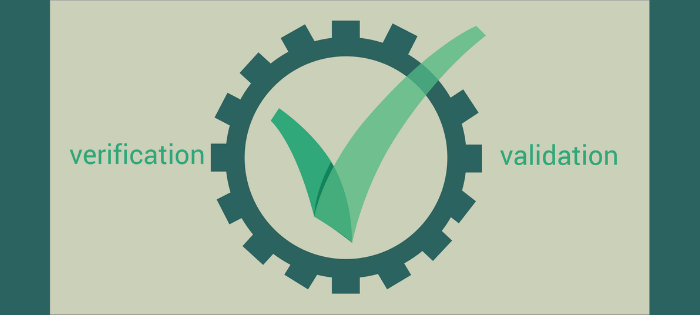
Validation vs. Verification: What’s the Difference?
To ensure a sound Hazard Analysis and Critical Controls Points (HACCP) Plan, companies must confirm the Plan is adequate for controlling food safety hazards through the process of validation and verification.
According to 9 CFR 417.4 a, “Every establishment shall validate the HACCP Plan’s adequacy in controlling the food safety hazards identified during the hazard analysis and shall verify that the Plan is being effectively implemented.” HACCP Principle 6—Establish Verification Procedures—further emphasizes the importance of establishing activities that determine the validity of the HACCP Plan and verify that the system is operating according to the Plan.
Based on these requirements, verification and validation seem quite similar. In practice, however, verification and validation are distinct functions that are both critical for compliance with U.S. Department of Agriculture (USDA) and Food and Drug Administration (FDA) regulations. In short, verification is focused on the implementation of the plan, while validation is focused on its accuracy. You cannot validate a process until you verify the process is consistently following the plan and operating as intended.
Validation: Proof the Plan Is Effective
Validation demonstrates and documents that the HACCP system works to address significant hazards. It provides proof that the Plan is effective. The purpose of validation is to demonstrate that the HACCP system, as designed, will adequately control identified hazards to produce a safe, unadulterated product. Following completion of the hazard analysis and development of the HACCP Plan, establishments enter the 90-day period of initial validation, where the validity of the HACCP system is checked. Is the Plan working to achieve its intended goal?
Validation involves gathering data over time to confirm something is operating as intended. It relies heavily on using scientific data from journals; in-plant observations, measurements, and evaluations; and expert advice. According to the National Advisory Committee on Microbiological Criteria for Foods (NACMCF), “Validation is the element of verification that focuses on collecting and evaluating scientific and technical information to determine if the HACCP Plan, when properly implemented, will effectively control the identified hazards.”
For example, validation of Critical Control Points (CCPs) may involve reviewing trends over the year, customer complaints, equipment issues, etc. to determine whether the process is working. To validate a temperature selected for heating food to remove harmful bacteria, a facility may cite scientific journals and studies.
Both USDA and FDA require validation of the food safety system to document scientific support for CCP or process preventive control critical limits. USDA further requires internal validation of the CCPs and critical operational parameters used in key prerequisite programs (PRPs). It is important companies use scientific evidence (e.g., microbiological test results, validation studies) to the extent possible to demonstrate hazards are effectively controlled.
Verification: Proof the Plan Is Followed as Written
Verification establishes the accuracy or truth of something—in other words, proof that the HACCP Plan is being followed as written. It answers the question, “Are we actually doing what we say we are going to do?” For example, if the Plan says that a food will be heated to a certain temperature to kill harmful bacteria, verification will test that the food actually reaches that temperature.
The purpose of verification is to confirm that the HACCP system is continually functioning as intended. Following the 90-day period of initial validation, monitoring and verification activities are performed to ensure the HACCP system continues to be implemented properly. These activities should be scheduled as needed (i.e., daily, weekly, monthly, quarterly, annually) and conducted by designated, trained employees.
Regular audits of the HACCP Plan further ensure that it is being followed correctly. This is particularly important if any aspect of the company’s procedure, process, or ingredients has changed or a new product has been added to production.
HACCP Principle 6 outlines four elements for verification:
- CCP Verification
- Overall Food Safety System Verification
- Food Safety System Validation
- Regulatory Verification
In addition, both USDA and FDA require verification of the overall food safety system. USDA requires reassessments to be performed annually to verify the HACCP Plan. FDA requires reanalysis to be performed at least every three years to verify the Food Safety Plan.
There are some common verification activities to ensure food manufacturing facilities meet these requirements:
- Document review, including HACCP Plan and related policies, plans, Good Manufacturing Practices (GMPs), standard operating procedures (SOPs), equipment and product specifications, processing rates, inspection records, supplier information, etc.
- Facility walk-through to review operations and observe specific processes and equipment, as needed
- Evaluation of current Food Safety Management System (FSMS) elements
- Food Safety Plan review
- Review of PRPs (e.g., sanitation, allergen controls, traceability)
- Environmental monitoring and product testing
- Confirmation that the CCPs and other preventive controls are implemented and effective
- Direct observations of CCP monitoring activities
- Calibration of equipment
Validation and verification are important components of any food safety system. They provide proof that the HACCP Plan is not only effective, but also being followed and working as intended. Validation and verification ensure the Plan is a living, breathing document that is used daily to ensure the food safety system complies with both USDA and FDA regulations and, more importantly, works to prevents foodborne illness.
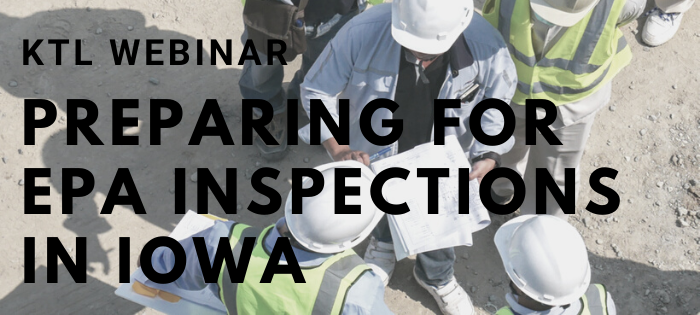
2.24.21 Webinar: Preparing for EPA Inspections in Iowa
Is your facility prepared for an EPA inspection?
EPA-contracted inspectors have been visiting facilities in Iowa. To date, we are aware of four inspections–all of which have been very comprehensive multimedia inspections. This is a trend that appears to be gaining momentum. Facilities must take the time now to regularly evaluate environmental programs to ensure records are compliant, easily accessible, and comprehensive.
Join KTL Senior Consultant and Iowa expert Becky Wehrman-Andersen and Senior Consultant Liz Hillgren, CHMM, CEA, for a one-hour webinar that will provide guidance on where to focus your attention to proactively prepare for an EPA inspection and reduce the likelihood for any findings and/or penalties.
Webinar: Preparing for EPA Inspections in Iowa
February 24, 2021 | 11:30 a.m. – 12:30 p.m. CT
Cost: $50*
Register Now!
Learning Objectives
During this webinar, we will focus on discussing, preparing for, and responding to the areas EPA tends to focus on in inspections: hazardous waste records, universal waste, used oil, training, hazardous waste containers, and reporting.
Our experts will address the following questions:
- How do I prepare for an inspection?
- What paperwork will be requested?
- What happens during a walk-through?
- What are my best options for fixing any problems?
- What happens after the inspection?
- What can I do now?
* Every facility registered for this webinar is eligible for a free 30-minute phone consultation with one of KTL’s EHS experts to help you understand current EHS regulatory requirements and inspection priorities. Offer valid until 3/31/21.

Comments: 1 Comment
Staff Spotlight on Jaime Stout
Get to know our KTL team! This month, we are catching up with KTL SharePoint Specialist/Developer Jaime Stout. Jaime has over 20 years of experience developing holistic IT solutions that create a more robust and efficient environment. She is based in KTL’s Madison, WI office.
Tell us a little bit about your background—what are your areas of expertise?
Let’s just say I am not your average IT professional, but that is exactly what makes me so good at what I do! I am a creative problem solver with a knack for coming up with some pretty crazy solutions to any challenge handed to me, which is basically a long story short of how I ended up becoming a SharePoint Developer.
My background is in business. I have a graphic design degree and moved around the printing, publishing, and insurance industries before coming to KTL. In all these positions, I was challenged with creating systems to do things where an existing application didn’t already exist—some simple, like creating project tracking, inventory tracking or billing, and some more complex, like creating an online proofing system when the technology was still in its infancy—all working with no budget and only the software available.
SharePoint popped up on my radar about 14 years ago while working on a project where I wanted our print vendor system to match our internal system to create a more fluid user experience. I was simply told this was not possible, but I am not one to take no for an answer! I started digging into what was available to me within that company’s framework and discovered SharePoint. It has been a love story ever since.
When I first started working with SharePoint, I realized it worked very similarly to the applications I had learned in design school. By applying those same design principles, I was able to create the look and functionality within SharePoint to match the print vendor site and create a one-site experience, which was key to success on this project. I have been applying that theory ever since, with a focus on making applications work for the user rather than making the user work around the application.
What types of clients do you work with? What are the biggest issues you see them facing right now?
I work with any and all KTL clients—anyone who is looking for a paperless way to do business in a more efficient manner. The biggest issue I see my clients facing right now is too many applications and not enough solutions. A trend I have seen over the years for companies big and small is that they tend to pick single-focus solutions that don’t talk to each other to solve an immediate need rather than looking at the big picture need. As a result, they end up with all these different applications doing different things, and the data is basically useless.
One thing I try to focus on when we start any information management project is how we can consolidate however many systems the company is using to pull information so they talk to each other. It is important to figure out what other areas might be affected by the project, because what lies just below the surface is usually the first thing to cause issues. Data is very specific, but at the end of the day, it is still a human who enters it. Anywhere we can streamline processes provides a better chance of keeping data clean and useful.
What would you say is a highlight of your job?
What I love most about what I do is the challenge. I refuse to accept “it can’t be done” or “no” as an answer. The fact is that it almost always can be done. You just have to think outside the box, and then the opportunities become endless. One of the great challenges we get from our clients is creating systems that make their lives easier, and I love being the one to come up with those solutions. If you can stump me or challenge me with something I can’t figure out, you will be the first.
What do you like to do in your free time?
My two girls and my very spoiled dog Luna keep me pretty busy in my free time. In the winter, we are a hockey family, and life revolves around the ice. Even Luna goes to games—she is the unofficial team mascot. I am also a huge fan of adventures and traveling. We have been home a bit more than usual this past year, but we have also had the opportunity to really enjoy some great trips to Chicago and Hawaii with a little extra precaution.
Read Jaime’s full bio and check out this interview with Jaime on KTL’s SharePoint solutions.

MichBio U: EHS Regulatory Overview for Labs
January 20, 2021 | 11 am – 12 pm ET
Cost: FREE for members, $19 for nonmembers
Join KTL Senior Consultant Liz Hillgren and MichBio for a high-level overview of the EHS regulations that might be applicable to laboratories. The webinar will discuss typical lab regulatory challenges and provide an overview of the major requirements for OSHA, EPA, and DOT compliance, including plans, reporting, training, and programs.
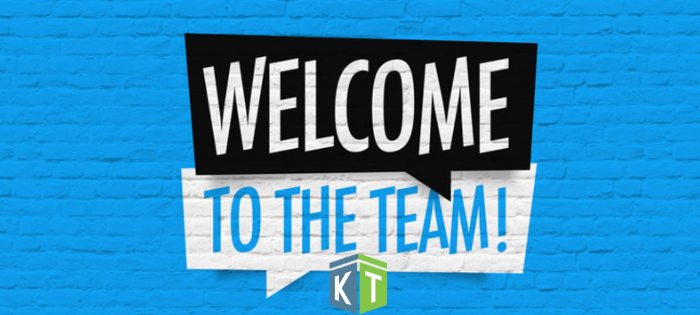
Comments: No Comments
KTL News: Expanding Resources
KTL is pleased to announce the addition of the following individuals to our team.
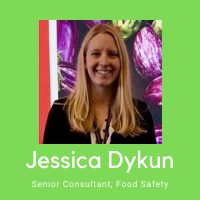
Jessica Dykun, Senior Consultant
Jessica is a Senior Consultant with more than a decade of experience working in the food and beverage industry, with particular expertise in food safety and quality assurance (FSQA). Jessica has lent her expertise on a variety of KTL food projects over the past several years; we are happy to welcome her as a KTL employee. Jessica is certified in HACCP and Lean Six Sigma and as an FSSC Lead Auditor. Read her full bio… jdykun@kestreltellevate.com | 724-544-8416
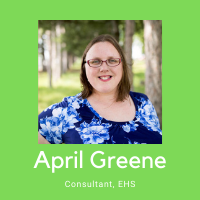
April Greene, Consultant
April is an experienced EHS professional with a demonstrated history of working in the environmental services industry. She brings a strong chemistry and laboratory background to her work at KTL. She is particularly skilled in sustainability, data analysis, and analytical chemistry and has significant experience managing quality, facilities, safety, and regulatory compliance in a laboratory setting. Read her full bio… agreene@kestreltellevate.com | 608-799-2166
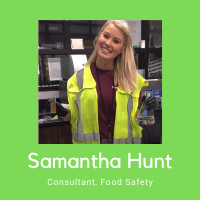
Samantha Hunt, Consultant
Samantha has a diverse background in the food and beverage industry, with particular expertise in food safety and quality assurance. Prior to joining KTL, she served in a variety of quality and lab management roles, with a specialized focus on beverage companies and fermentation science. Through her previous positions, Samantha has developed in-depth knowledge of FDA food safety regulations as they apply in laboratory, manufacturing, and packaging settings. Read her full bio… shunt@kestreltellevate.com | 828-470-8258

Erica Schein, Consultant
Erica has a strong background working in the food safety and quality control environment. She excels at researching and conducting programs to manage food safety requirements and ensure overall safety. Through her previous positions, Erica has developed in-depth knowledge of FDA and USDA regulations as they apply to a leading wholesale distribution center. She has in-the-field experience managing the daily operations of a highly effective and compliant food safety program. Read her full bio… eschein@kestreltellevate.com | 773-456-5210
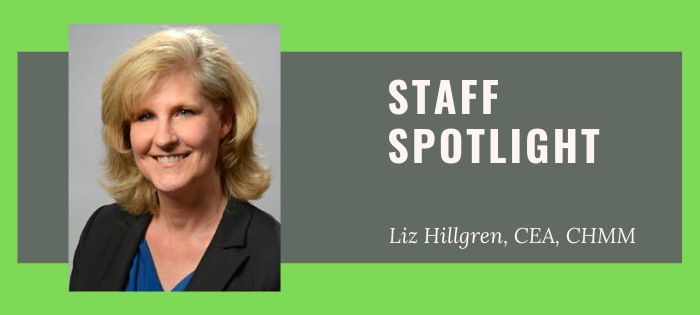
Comments: No Comments
Staff Spotlight on Liz Hillgren
Get to know our KTL team! This month, we are catching up with Senior Consultant Liz Hillgren. Liz brings over 20 years of environmental experience in both industry and consulting to the KTL team. She is based in Ann Arbor, Michigan.
Tell us a little bit about your background—what are your areas of expertise?
My background is in hazardous waste. I worked for transfer, storage, and disposal facilities (TSDFs) for 20 years. I have worked at a landfill, a stabilization facility, a fuel blender, a used oil recycler, and a wastewater treatment facility. I have managed technical groups but also customer service throughout my career in industry.
What types of clients do you work with? What are the biggest issues you see them facing right now?
My KTL customers are largely manufacturing facilities. Most of them are mid-sized, so they don’t always have tons of money—but they do have real regulatory issues.
What would you say is a highlight of your job?
I like to help my customers solve problems, because I feel like I am part of their team. I also like to learn new things—my job always has something new to think about.
What do you like to do in your free time?
I am a gardener, and I enjoy being outside. I live in an old house full of projects and potential. I like to sew. I just started beekeeping, so that is currently where all my time and money are spent!
Read Liz’s full bio.
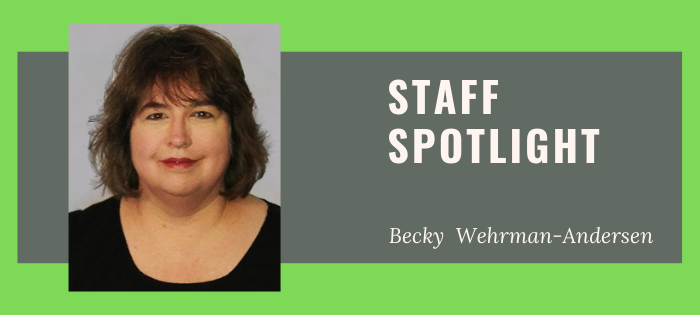
Comments: 1 Comment
Staff Spotlight on Becky Wehrman-Andersen
Get to know our KTL team! This month, we are catching up with Senior Consultant Becky Wehrman-Andersen. Becky is an EHS compliance leader with nearly 30 years of practical experience. You can find her working in Des Moines, Iowa.
Tell us a little bit about your background—what are your areas of expertise?
I am fortunate to have had a unique and wide variety of science positions that eventually led me to my position at KTL. My areas of expertise include hazardous waste management, risk minimization, emergency response, and EHS compliance strategies for difficult processes.
I started as a bench chemist with DuPont in a GMO lab where I began learning hazardous waste regulations by default. I spent a few years at Iowa DNR (IDNR) building a household hazardous waste program and then was with Metro Waste Authority (MWA) in Iowa for ten years learning more about EPA regulations, hazardous waste management, and all things trash (EPA, OSHA and DOT). During my time at IDNR, I began developing strong expertise in emergency response and hazardous waste site cleanups. I led a state-wide school lab chemical cleanup program with more than 20 community partners, assisted in cleanup from natural disasters, and worked closely with emergency responders throughout the state.
I also served as a volunteer firefighter/EMT for a few years and developed an extensive training program focused on hazardous materials chemistry. In 2008, I started a small business consulting to industry in hazardous materials, which became my full-time gig in 2010. Through that adventure, I was able to further refine my training skills in EPA, DOT, and OSHA regulations and assisted a number of large businesses in all things “crazy trash” management and risk minimization strategies. In 2019, I had an opportunity to join KTL and brought my customers with me. It has been a great career with enormous variety, and I’m excited to see what the next few years bring.
What types of clients do you work with? What are the biggest issues you see them facing right now?
The majority of my clients are industrial facilities with large quantities of chemicals; however, I also have clients that are schools, universities, or small startup lab facilities. The biggest challenge I see in industry right now is the continued push to do more with less. I see industries in great fiscal position that are rapidly expanding their operations and processes but have been hesitant to invest in additional personnel to build robust EHS compliance programs. It is not unusual for me to visit a plant where there are 250 employees and one person managing all EHS programs for the plant. It is challenging for those individuals to achieve success, and I’m grateful to have the opportunity to help them prioritize, implement programs, and have a substantial impact on the overall safety and environmental compliance at their facilities.
What would you say is a highlight of your job?
I love the people that I work with. My team at KTL is incredible, and after working for so many years as a sole proprietor, I love having the support and coordinated efforts that result from such amazing co-workers. I also thoroughly enjoy my clients. The company representatives have a deep commitment to their work and ensuring that their companies are operating in compliance and, even more importantly, that their co-workers are protected.
I also have to say that I love the problem solving that comes with unusual hazardous waste situations. I know it sounds crazy, but I love those phone calls that start with, “You won’t believe this one, Becky, but we found this….”
What do you like to do in your free time?
I have great adult kids that I enjoy spending time with, a wonderful patient husband, and three dogs. Spending time with them is my favorite activity in the world. I enjoy gardening, being outside, and have recently taken up sewing! I never considered myself a “seamstress,” but have gotten fairly adept at making a great quality mask to protect my friends and families. I think I’ve made about 175 for various friends, families, and co-workers and will be finishing up another 30 or so in the next week as “backups” for local school kids who may need them. I think I may even try quilting after this! Learning new things is one of my favorite ways to spend time.
Read Becky’s full bio.
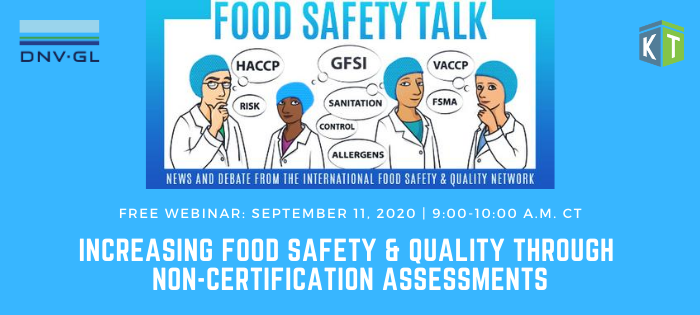
9/11/20 Webinar: Increasing Food Safety & Quality
Tom Paraboschi from DNV GL’s Supply Chain and Digital Assurance Services and KTL Principal, Food Safety, Bill Bremer will discuss the benefits of increasing safety and quality through non-certification assessments at this free webinar, including:
- Overview and examples of regulatory, assessments, GMP, etc. prior to certification
- Real examples of supply chain management from food and beverage companies
- Digital solutions available in traceability and assessments
Increasing Food Safety & Quality through
Non-Certification Assessments
Friday, September 11, 2020
9:00 AM – 10:00 AM CT
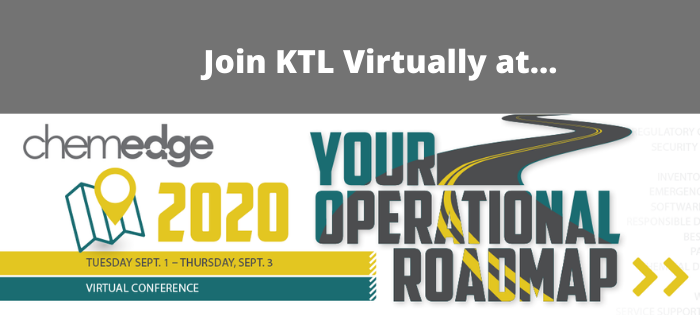
Comments: No Comments
Join KTL Virtually at ChemEdge 2020
NACD’s 2020 ChemEdge is making the shift to full virtual this year. The conference may look a little different, but it is still filled with all the critical knowledge and networking opportunities chemical distributors expect from ChemEdge.
ChemEdge 2020
Tuesday, September 1 – Thursday, September 3
Register Now!
As always, KTL will be an active participant in ChemEdge 2020. Be sure to join KTL Senior Consultant and Responsible Distribution Adviser Jake Taylor for the following presentations:
+ Digging Up the Roots! Root Cause Analysis Review and Exercise
Tuesday, September 1, 11:00 am-12:15 pm
+ OSHA Top 10 List
Wednesday, September 2, 9:00 am-10:00 am
We look forward to making the most of this virtual event and hope many of our clients and friends will be joining us at ChemEdge 2020 this September.
